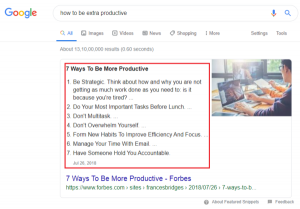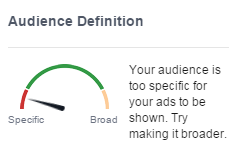
I re-activated my Netflix account on the weekend, a rainy Saturday afternoon in London, and decided to give “Better Call Saul” another chance. It takes a show set just over a decade ago to remind one how much things have changed; mobile phones weren’t smart, social media didn’t exist, and public television advertising was about as close to YouTube as you got. But all that has changed.
Now your small business can take advantage of an array of online marketing tools. Taking on the competition isn’t about the size of your budget anymore, it’s about creativity and consistency. And with a concerted effort, you can develop a powerful online presence for your business.
If you haven’t paid much attention to your digital marketing, now’s the time to start. Use these 7 tips to revitalise your small business online presence:
1. Review your target audience
Before you do anything, sit back and have a think about your target audience. Most small businesses start out taking on any business they can find, but they soon learn this comes at a cost. The company is stretched to the breakpoint and running at a loss or barely profitable. An online revamp is the ideal time to re-evaluate your target audience, and develop a plan for future growth.
2. Communicate a simple message
Once you know who you’re talking to, craft a simple message. In my experience, business owners are obsessed with using industry buzz words, which only serve to confuse prospective customers. Keep your message concise and use simple language. That way, when a visitors arrives at your site, they quickly understand the value your company offers.
3. Involve your clients
Your customers can help you shorten your sales cycle. If you ask them, they’ll share the buying process they followed in selecting your product or service. Telling you exactly what challenges they faced in the buying process. You can use this information to shortening sales cycle. It’s kind of like having the answers to the exam. Use the experiences they share with you to streamline your marketing process.
4. Configure your website for conversion
Your website is the linchpin of your online presence. It’s the place you drive traffic to and is an integral part of your lead generation strategy. Make sure your site is geared toward lead conversion; your content is relevant to where visitors are in the buying process; visitors are greeted with a call to action; and that you have landing pages ready to capture contact details.
5. Make sure customers can find your business
Over 81% of people turn to search engines when they want to find something. Google has replaced the Yellow Pages, and their search market share hovers at about 90 percent. So if you don’t have a Google My Business Page, drop everything and set one up. Then there are two other simple actions you need to take to drive traffic to your site:
- Create quality content (eg., blogs, ebooks, webinars) on a frequent basis.
- Participate in social media discussions in which your target prospects are already conversing.
6. The social media dilemma
Social media is a tricky one for most business owners. How much time do you spend on it and which channels? Before deciding, talk to your customers. Ask them where they spend their time. Once you know which channels your customers and prospects are active on, create a social media plan. Avoid getting caught up in the latest social media trend. Concentrate on engaging and helping prospective clients across 1 or 2 channels. Don’t forget; social media may be free, but think about the value of your time!
7. Be smart, use the right tool
I can’t tell you how many business owners I’ve worked with who insist on cobbling together various digital marketing tools. Be careful not to confuse digital marketing with website maintenance. You are busy. You work long hours. Unless you have a marketing and web team, make the most of your time and invest in marketing automation tool. You will need to spend at least 10 hours a week on your digital marketing efforts. Having the right platform will ensure you spend your time productively.
Bonus – Keep evaluating what you are doing
Marketing isn’t what it was a decade ago; write a cheque for a few thousand pounds, run an advert and wait for the phones to light up. Nowadays, you can measure the results in real-time. Every blog post, pay-per-click advert, and tweet is measurable the moment of creation. When you revamp your online presence, immediately start tracking your marketing initiatives. Think of your efforts as campaigns, for instance: Q1 Lead Generation is to increase leads for managed IT services. The type of content you create, the tweets that you publish or the LinkedIn advertising you do should relate to this theme. And every action should be measured against a goal for that campaign.
If you need more help getting on revitalising your online presence, download a copy of our Digital Marketing Plan for Small Business.
[Image credit: Are We Not Entertained]
Business & Finance Articles on Business 2 Community(99)
Report Post







